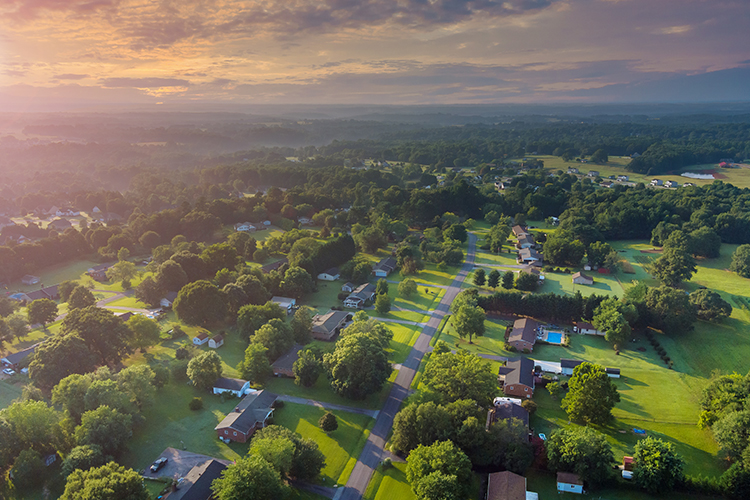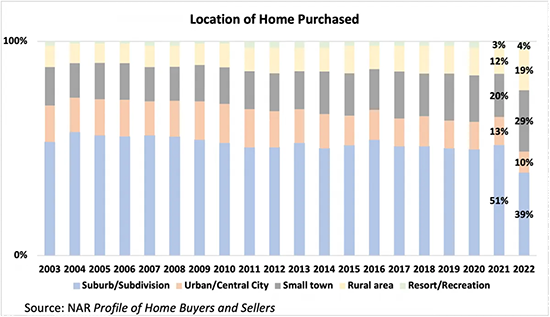
Zoom towns became the boom towns last year. With greater acceptance of remote work situations, more people are choosing to move away from bigger population centers.
Real estate markets have been red hot as inventory remains incredibly low, and the location of those home sales has seismically shifted. Home sales in small towns and rural areas accounted for 48% of all sales in the most recent year. That compares to 39% for suburban and subdivision home sales, based on data from the National Association of Realtors (NAR).
Just one year ago, suburbia accounted for 51% of all home sales compared to 20% for small towns and 12% in rural areas that yielded a combined total of 32%. When comparing the data from July 1, 2020, and June 30, 2021, to the most recent year, home sales in small towns and rural areas jumped by a remarkable 16%.
This is a notable shift as home sales in the suburbs averaged just over 50% over the past two decades. On the flip side, the combined category of small towns and rural areas hovered near 30% during those same 20 years.

The pandemic impact
“Buyers choose their neighborhood based on many factors, but the top of the list was the quality of the neighborhood, affordability, and proximity to friends and family,” shared Jessica Lautz, vice president of demographics and behavioral insights with NAR. “Small towns and rural areas proved to be the winning dynamic for many when making that choice — affordability was key, and family support systems were just down the street,” she continued in her Economist’s Outlook “Eleven takeaways from the 2022 profile of home buyers and sellers.”
Another major demographic shift occurred in the past annual selling cycle — miles to work. The number had been rather steady at 10 to 15 miles. In the tracking year ending on June 30, 2022, that number skyrocketed to 50 miles — a 35-mile jump.
“Buyers’ migration to small towns and rural areas was undoubtedly at play,” continued Lautz of the shift from 15 to 50 miles. “Another factor is remote and hybrid work settings. In January 2021, many headlines touted that CEOs provided employees with permanent remote work. This allowed buyers to separate themselves from city centers or inner suburbs to migrate to farther areas,” she said.
“Zoom towns were boom towns in the last year,” concluded Lautz.
The question remains — will the shift continue, or is it simply a pandemic blip?








